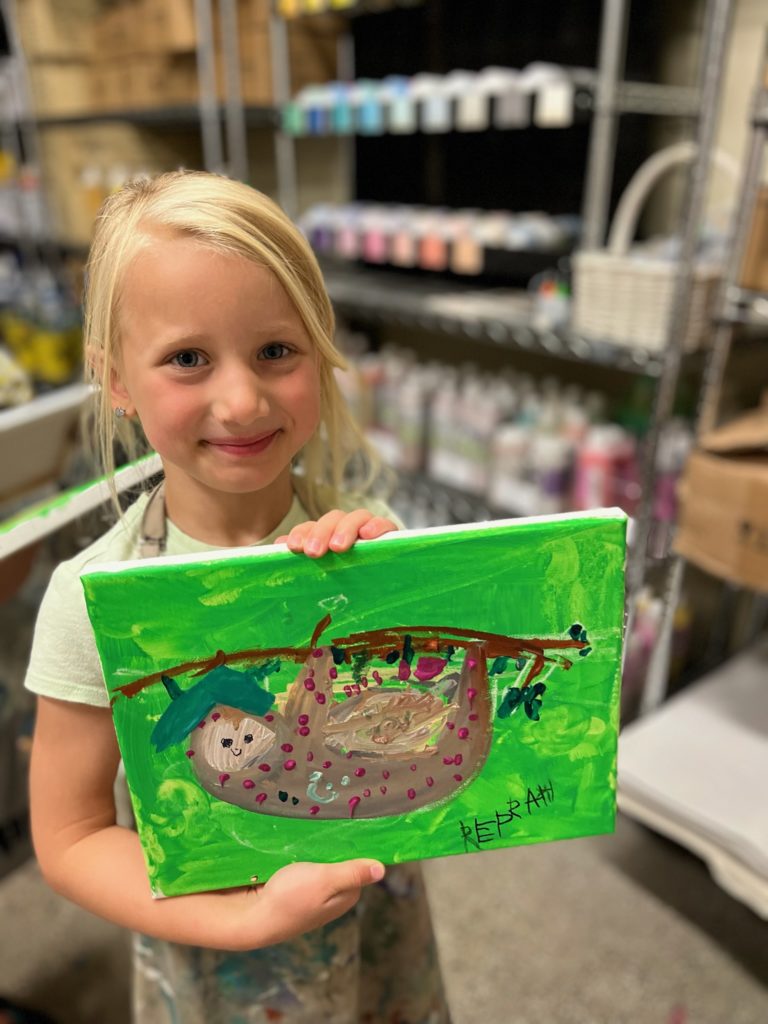
It may seem like you’re either born creative or you’re not, but research shows that artistic creativity is more of a learned skill than an inborn talent. Although creativity is a skill that parents can help their kids develop, we may be curtailing that creativity as we purchase toys and entertainment for our kids that are more passive and less imaginative.
For example, we used to build forts out of blankets laid over the kitchen table, instead, now we buy our kids realistic ready-made forts complete with a TV, running water and curtains. Kids used to imagine a sword or magic wand made from a stick, comparatively, we now provide pre-fab replicas of Harry Potter wands that actually perform feats of “magic”. While we used to read books with our children at bedtime and they went to sleep imagining, we often find them immersed in real-time video adventures on screens, not knowing what is real or fantasy.
Surely, we can do a better job of encouraging creativity in our children. Researchers have identified 5 ideas for helping kids be more creative.
1. Time
The number one resource for creativity is time. Kids need unstructured, child-directed, imaginative playtime. This time should be without adult direction and void of a lot of commercial props. Research by Kathy Hirsch-Pasek of Temple University, among others, has found that children attending academic preschools show no advantage in reading or math achievement over kids who go to play-based preschools. Although lessons are valuable to spark interest in different creative processes like art, music, dance, or drama, designed to help them build skills in these areas, be careful not to fill their schedules with activities that limit time for free-play and creativity.
2. Creative Conversation
Focus on conversational creativity. At dinnertime or bedtime have the kids brainstorm activities for the upcoming weekend. Encourage things they have never done before. In like fashion, ask them to generate new ideas for old ways of doing things; chores, homework, or routines. Encourage discussions of risk taking; successes and failures. Share your mistakes and what you have learned from them; how you overcame or grew from them. Fear of failure curbs creative thought. Risk taking encourages creativity.
3. Freedom
Allow kids the freedom to explore their ideas. Don’t tell them what to build out of Legos or give them a model or directions for how to build it. Let them loose to create whatever they want to out of the blocks! Let them color outside of the lines or with no lines at all. Provide resources to help kids create but don’t dictate what to create. Art supplies, old costumes, building materials, re-cyclables; these are some of the things you can provide for free-time creative play.
4. Turn off the Screens
Encourage kids to read for pleasure and participate in the arts rather than watch TV or spend time on their screens. TV can harm kids’ language development and attention span. Less screen time means more time for creativity like writing or rehearsing a play, learning to draw, or reading every book by a favorite author. Reading sparks much more imagination than watching a movie. Acting out a story or coming up with a “different” ending requires more creativity than just listening to a story. Use YOUR imagination to guide theirs.
5. Praise Process over Product
Finally, stop measuring your kids on what they achieve. Dweck’s research is very clear that kids gain confidence from an emphasis on process rather than product. We often praise the end product of an art project or a well written report. Rather, try emphasizing the creative process by asking questions such as: What did you like about that activity? How did it make you feel? Was it fun? Rewarding? What would you do different next time?
In conclusion, creativity is essential to science, math, and even emotional intelligence. Creative people are more flexible and more successful problem solvers. Therefore, when we nurture the artistic skills of our children, we give them tools that will serve them the rest of their lives.
____________
Curated from an article by Christine Carter, Ph.D. @ https://greatergood.berkeley.edu/article/item/everyday_art